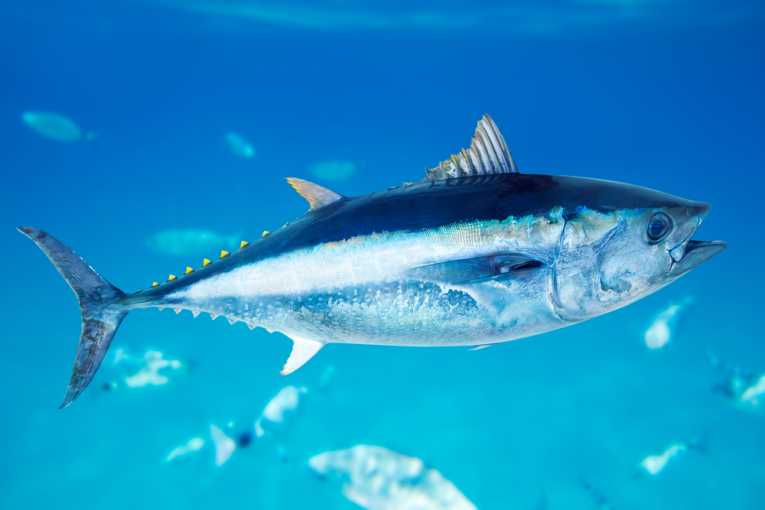Ear-bone microchemistry, electronic tagging, and catch data don't give much of a clue about the successful model that now indicates solutions to an ongoing problem in the Atlantic.
It's a new model of how bluefin tuna (Thunnus thynnus) influence each other's populations from both sides of the ocean. This is one of the largest and fastest bony fish on earth and presents a special predatory function over many smaller fish and squid. It is only predated by very large sharks and whales including dolphin.
Since 1950, a steep decline has decimated the fish's numbers, largely due to ridiculous overfishing. The market value of the meat, because of its use as sushi, causes human predation on the grandest international scale. The model projects population sizes that will result from different managements.

A small bluefin being tagged; Credit: © Tag-A-Giant
The two populations recognised by ICCAT consist of the westies in the Gulf of Mexico and the easties that spawn in the Med. Plos ONE is the online journal which has published Murdoch McAllister and Barbara block's study, indicating the pre-mentioned 83% decline in the Gulf and 67% decline in the east. New in the study is tagging data that indicates how migration occurs and the "birth certificate" of the ear bones that shows where the fish hatched. At 35 years old, a mature tuna is 1500lb in mass, capable of swimming across the Atlantic or returning to spawning areas many times (eg. their annual breeding). The model also uses rapid maturation models for the Mediterranean and a slightly slower model for the Gulf.
This infers greater resilience on the Med. population, of course. The larger eastern population moves to the west to feed on occasion, and the result of this is modelled too. The present models had no ability to show hatch area as differing from catch area explained Dr. Murdoch McAllister from the University of British Columbia. The actual percentages of easties caught in some western fisheries were more than 50%. Assessments of tuna recovery have been deeply influenced by incorrect data, as both populations have been affected by the highest fishing mortality on record between 1998 and 2007, in the Mediterranean.

Here are captured tuna, fortunately retained in research tanks, rather than subject to 'ranching' fattening practices in the Mediterranean; Credit: © Tag-A-Giant
If the current regulations begin to be respected, the eastern population is shown to recover because of the rapid maturation model. While it would take at least 15 years for the depleted population in the west to recover its population, the east could recover relatively quickly. That depends of course on pirate fishers and other fishermen.
Dr. Barbara Block of Stanford has her say with the statement, "This model presents a challenge to the global community responsible for the management of Atlantic bluefin tuna, both from a regulatory and scientific perspective. If regulations are not enforced, population recovery will stall. If we don't account for population overlap in assessments, the assessments upon which we base management will be flawed."










